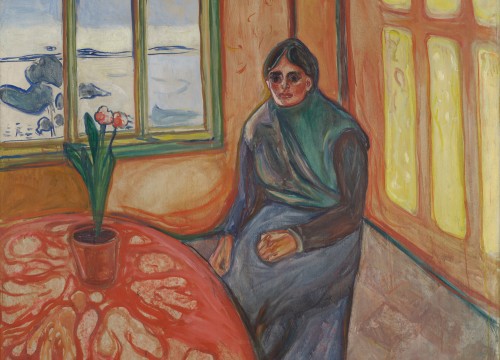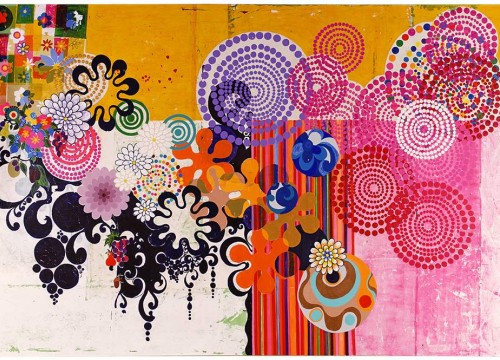Postponed due to the pandemic, the exhibition includes paintings and lithographs which dialogue with Japanese artwork
The history of encounters and sometimes clashes-between East and West is a tangled web of misunderstandings, emulations and propaganda. Above all, of ramblings on both sides. From the vexata questio (difficult question) of who invented spaghetti first to Chinese fireworks and porcelain or the Zoroastrian rites of Persia recounted by Marco Polo, torrents of words, hieroglyphics and ideograms have attempted to account for each of their curiosities and prejudices.
THE WHITE CANVAS RECEIVES THE PAINTER'S GESTURE, WHICH, TRANSLATED INTO COLOUR, BECOMES A DELICATE, MUTED SPACE
From the influence of Japanese art in van Gogh’s artistic production through Gauguin’s Polynesia, in the 1950s and 1960s artistic influences between West and East- the United States, France, and Japan-experienced a particularly fertile moment. After being in Paris for several years and spending time with several Japanese artists, Sam Francis arrived in Tokyo in ‘54, on the invitation of the great French critic Michel Tapié, in search of inspiration through Informal and Gutai art. There he had the opportunity to reflect on the concept and practice of negative space: the surface of the canvas, space of the soul, which makes absence the mark of a presence, white the condition of color, silence the only possibility of sound.
IN '54 IN TOKYO AT THE INVITATION OF MICHEL TAPIÉ HE WAS MORE DEEPLY INFLUENCED BY INFORMAL AND GUTAI ART
The white canvas is a welcoming surface that receives the painter’s gesture, and it is in the gesture, translated into color that individually gains a discrete, tenuous space.
“Sam Francis and Japan: Emptiness Overflowing,” at the Los Angeles County Museum of Art (through July 16), is an opportunity to rethink, once again, how “taking away” is a way to reach a place that some thinkers, such as Maurice Blanchot, have called neutral, and perhaps some mystics have called God. A desire for purity, for absence, which is without a shadow of a doubt the greatest utopia of art. Every stroke of color is after all a stain, just as words soil the blank page. Speaking of absence, it should be noted that, due to pandemic complications (the exhibition was supposed to
be held in 2020, but for obvious reasons it was postponed), the major works of Sam Francis that are present can be counted, literally, on the palm of one hand. Many, too many, lithographs. Having had to make a virtue out of necessity, the curators made the clever choice of putting Sam Francis’ works in dialogue with other works by Japanese artists. A dialogue all the more commendable because it is composed of tones, nuances and, above all, silences.


























